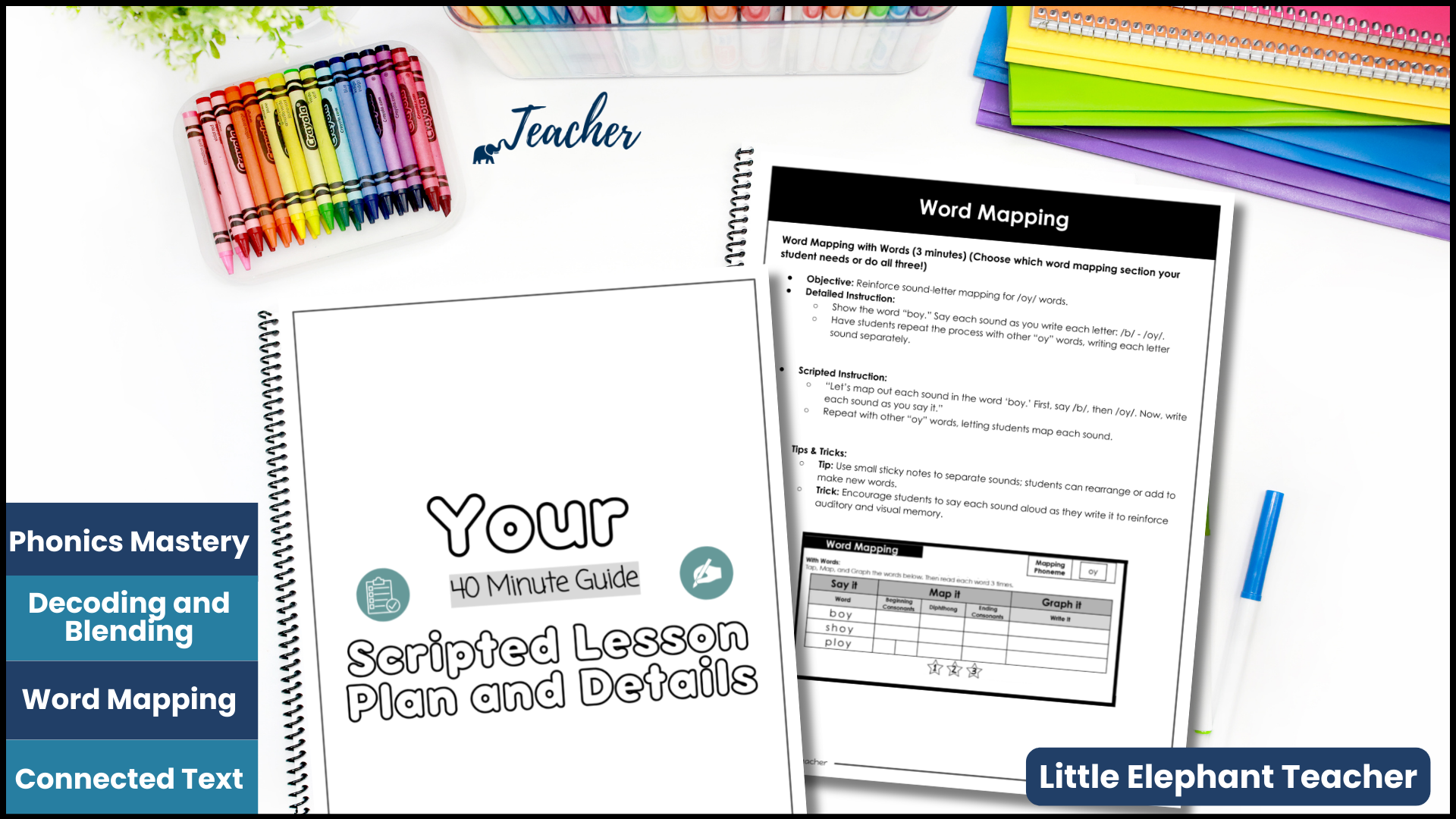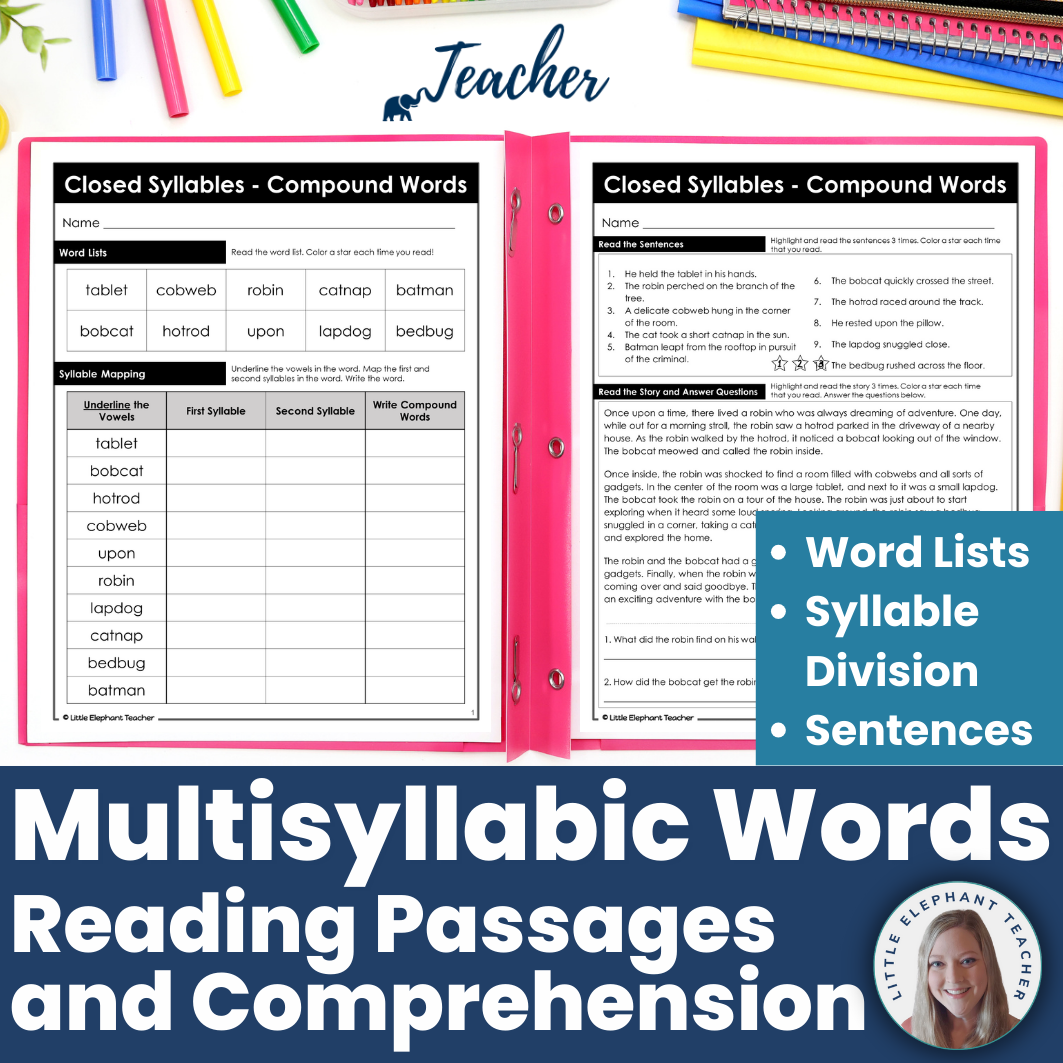How Often Should I Meet with My Reading Intervention Groups?
I get this question quite a bit, so I want to share my experience and thoughts on how often to meet with reading intervention groups and how long each session should be. Thank you for reaching out, and thank you for your interest in supporting your students’ reading growth!
To make things even easier, I’ll share my Free Reading Intervention Guidelines with you. This includes a complete breakdown of a sample two-day, 20-minute reading intervention lesson plan, as well as a 40-minute lesson breakdown. Each sample includes detailed teaching tips for each section along with fully scripted lesson examples.
With this post, my goal is to give you a clear and practical answer on structuring your reading intervention lessons based on your available time, so let’s dive in!
Why Frequency and Duration Matter in Reading Intervention
When it comes to reading intervention, especially for older students, the amount of time you spend and how often you meet with each group can significantly impact their success. Older students who are behind in reading need frequent, structured support to close the gaps in their phonics and comprehension skills. Meeting regularly with students allows them to build on what they’ve learned, practice new skills, and solidify their understanding. The more opportunities they have to engage with reading, the more confident and capable they’ll become.
For Example
Let’s take a student named Maria, a fifth grader who reads at a second-grade level. Maria struggles with decoding multisyllabic words and lacks confidence in her reading fluency, often skipping over challenging words instead of sounding them out.
If Maria meets with her intervention group just once a week for 30 minutes, she receives limited practice with targeted skills and quickly forgets the strategies introduced, requiring significant review each session. On the other hand, if she participates in a daily 20-minute session, she regularly revisits decoding techniques and engages in structured practice. Over the course of a few weeks, Maria not only retains the strategies but begins to apply them independently because she’s had the chance to consistently build on what she’s learned.
By meeting more frequently, Maria can connect previous lessons to new ones, practice skills until they become automatic, and develop the confidence to tackle new words. This regular practice allows her to see steady progress, strengthening her foundational skills and preparing her for more advanced reading tasks. Frequent, structured support accelerates her growth in a way that a less consistent schedule simply wouldn’t achieve.
Meeting Frequency for Optimal Reading Growth
Daily Meetings are Ideal
If possible, I recommend meeting with your reading intervention groups daily. This may seem like a lot, but the regular practice and reinforcement are key to making progress. When students have the chance to work on their reading skills every day, they retain information better and build confidence faster. In my own experience, those daily sessions make a huge difference in how quickly students grasp and apply new phonics patterns or decoding strategies.
Consistency Matters
Consistency is just as important as frequency. If you can’t meet daily, try to create a regular, predictable schedule (for example, every other day). This helps students know what to expect and ensures they have ongoing support. When intervention becomes part of their routine, they are more likely to show improvement over time.
Addressing Time Constraints
I know that daily meetings might not always be possible. Between other classroom responsibilities, schedules, and students' varying needs, it can be tough. If that’s the case, don’t worry! Even if you can’t meet every day, consistent sessions 2-3 times a week will still be beneficial. The key is making the most of the time you do have.
How Long Should Each Reading Intervention Session Be?
Time Dependent on Your Schedule
The length of each reading session depends on how much time you have available, but here’s what I’ve found works best:
Shorter Sessions (20 minutes): If you’re tight on time, 20-minute sessions can still be very effective. I recommend splitting certain lessons into two shorter sessions. For example, when teaching the "oy" sound, you could break the lesson into two manageable 20-minute chunks over two days. This allows you to give focused, intensive instruction without overwhelming the students.
Sample 20-Minute Reading Intervention Lesson Breakdown
Here’s how you could split a lesson over two 20-minute sessions:
Day 1 - “Oy” Lesson:
Skill Work: 3-5 minutes – Start with a quick review of the sound or pattern.
Decoding Words: 1-2 minutes – Practice decoding a few words with the “oy” sound.
Blending Words: 3-4 minutes – Blend the sounds into words.
Word Mapping with Pictures: 3-4 minutes – Use pictures to reinforce the connection between sound and spelling.
Connect to Text - Decodable Text: 6-7 minutes – Practice reading a short decodable text featuring the “oy” sound.
Day 2 - “Oy” Lesson:
Word Mapping with Words: 3 minutes – Review mapping the sound with words.
Word Mapping - Listen and Write: 3 minutes – Have students listen and write the words with the “oy” sound.
Connect to Text - Fluency: 3 minutes – Focus on fluency with the decodable text from Day 1.
Decodable Text: 8 minutes – Continue reading or re-read the text for fluency.
Purposeful Phonics Practice (Exit Ticket): 3 minutes – End with a quick check to see if students have grasped the concept.
Sample 40-Minute Reading Intervention Lesson Breakdown
If your schedule allows for longer sessions (around 40 minutes or more), you can complete an entire lesson in one sitting. Here’s how you might structure it:
Day 1 - “Oy” Lesson:
Skill Work: 3-5 minutes – Introduce or review the phonics skill.
Decoding Words: 1-2 minutes – Practice decoding.
Blending Words: 3-4 minutes – Blend the sounds into full words.
Word Mapping with Pictures: 3-4 minutes – Reinforce with visual aids.
Word Mapping with Words (if needed): 3-4 minutes – Map the sound with written words.
Word Mapping - Listen and Write (if needed): 3-4 minutes – Reinforce through listening and writing.
Connect to Text - Fluency: 5 minutes – Focus on fluent reading of the decodable text.
Decodable Text: 15 minutes – Read and engage with the text, applying the skill.
Purposeful Phonics Practice (Exit Ticket): 5 minutes – Use an exit ticket to check understanding.
Adjusting Your Reading Intervention Based on Student Needs
Flexible Timings
Every student group is different, and you’ll need to adjust these time frames depending on your students' abilities and needs. Some reading groups may grasp the material quickly, allowing you to move through the lesson faster. Others may need more time to work on decoding or fluency. That’s okay! The suggested times are just guidelines.
Monitor and Adapt
I like to use formative reading assessments, like the exit ticket or these Phonics Assessments, to gauge whether students have truly mastered the skill. If the group is struggling, I might spend more time on Word Mapping or Decodable Text activities to ensure they’re ready to move on. Don’t hesitate to slow down or review if needed. Intervention is all about meeting students where they are.
Conclusion: The Importance of Frequency and Duration in a Reading Intervention
To sum it up, meeting with your reading intervention groups daily (or as frequently as possible) and being consistent with your timing will lead to the best results. Whether you can meet for 20 minutes or 40 minutes, structuring your lessons around key skills, decoding, and reading connected text will help your students grow as readers. Remember to adjust your timeframes based on student progress and use frequent assessments to guide your instruction.
Explore More Resources and Get in Touch
Ready to dive deeper? I’m excited to share my Free Reading Intervention Guidelines, complete with a sample two-day, 20-minute lesson breakdown and a 40-minute lesson plan. You’ll get teaching details and scripted lesson examples for each section, making it easy to implement in your own classroom.
Feel free to explore my resources on Teachers Pay Teachers for more structured lesson plans, and don’t hesitate to reach out with any questions. I’m here to help support you and your students on their reading journey!
Ready to take your teaching to the next level? Head over to our Little Elephant Teacher TPT Store today and grab must-have resources. Happy teaching!











